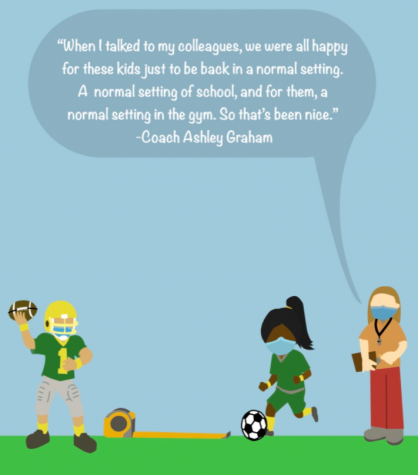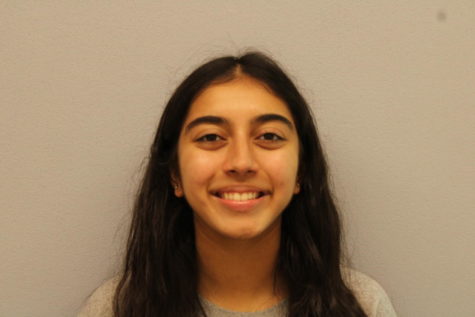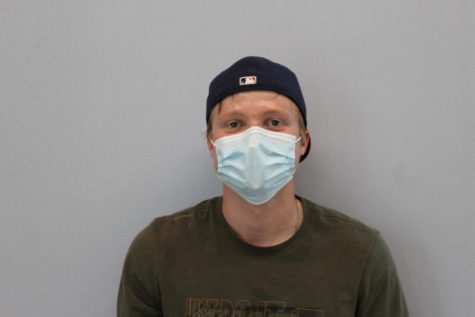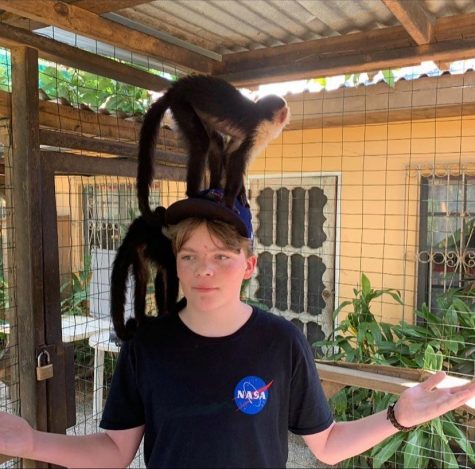Out of Contact Sports
Stevenson athletes and coaches weigh in on new contact and safety rules.
As he reaches the golf course, Madhav Muralidharan ‘22, makes sure he has his mask on before leaving his car and breathes a sigh of relief. Missing a piece of equipment would be forgivable, but without a mask, his practice with the Stevenson golf team would not be possible.
Since the beginning of September, Muralidharan and other Stevenson athletes have participated in what are known as contact days. From September 7 to October 31, the Illinois High School Association (IHSA) has permitted athletes to participate in 20 of these optional contact days, which allow coaches to provide in-person coaching and athletes to practice with their teammates.
The guidelines from the Illinois Department of Public Health (IDPH) and the Illinois State Board of Education (ISBE) categorizes each sport into high risk, medium risk, and low risk based on the amount of physical contact and possible transmission associated with each sport. Lower risk fall sports such as golf and swimming have begun their seasons. Although their season is mostly unaffected and they don’t have to adhere to the contact days schedule, they are still required to follow certain precautions such as maintaining social distance and not using the locker rooms.
Muralidharan said that the schedule for the season is almost identical to what it has been in the past. Since the second week of August, the team has been practicing every day after school, with games and tournaments on the weekends. He said that an additional component that everyone has to keep in mind are the safety protocols in place.
“When you talk about COVID-19 protocols, it’s not just wearing face masks and face shields,” Muralidharan said. “The IHSA also requires us to do a COVID-19 form [questions about symptoms, exposure, travel, etc] before we go to practice and play and undergo a temperature check. If you don’t meet this criteria, you won’t be playing or practicing for a certain amount of time.”
Although higher risk sports still have the same policy with masks and screening, they have more limitations during their practice. Rather than meeting every day, they are restricted to only meeting during their scheduled contact days as their schedules have been postponed to the spring.
Yongchan Lim, ‘23, a wrestler at Stevenson, described how contact days are operating for high risk sports. Instead of practicing drills with each other, the focus of their practice shifted towards getting back in shape.
“The coaches have been making contact days very safe for us wrestlers, especially because heavy contact sports can be pretty dangerous,” Lim said. “We distance from each other and focus primarily on technique and conditioning.”
Consequences due to COVID-19 do not just impact higher risk sports, but also the spectators. These circumstances result in smaller crowd sizes for the sports that are in season.
“When it comes to golf, there are usually a decent size of people there and larger crowds at invitationals, both a show of support and pressure,” Muralidharan said. “Due to COVID-19, I would argue that this aspect has been completely eliminated.”
In order to adhere to the contact day safety protocols, such as wearing masks and maintaining six feet of distance, coaches are faced with a challenge over how to prepare their players for their upcoming seasons. With practically all of the summer taken away, they have had a limited window of preparation.
Ashley Graham, Stevenson’s Girls Basketball Coach, describes some of the limitations the basketball teams encountered this year.
“Summer basketball for boys and girls is also another season, we play 30 games, have an away camp at a college, and we have camp with 25 contact days,” Graham said. “So that was very different since June is always stacked with basketball and that was very hard.”
Although the fall season has been considerably changed, coaches are still considering the well-being of athletes as a priority. For instance, practices have been reformed around the fact that athletes have to wear their masks for the entire duration.
“We’ve been really scaling back some of the conditioning aspects: we’ve shortened drills, given more breaks, more mask breaks, more water breaks,” Graham said. “We do try to be cognizant that we are all wearing masks and so the more competitive and exerting one on one and two on two drills we kind of shy away from.”
For athletes such as Muralidharan, the coaches’ support is appreciated. Many athletes have acknowledged their coaches impact on the team in this unprecedented season.
“Stevenson’s team would not be as great as it is, without the support and guidance we get from our Head Coaches,” Muralidharan said. “Coach Rueth, Coach Bares, and Coach Linnenburger have done a fantastic job adapting to the pandemic. Since our coaches have experience in competitive golf, they understand how vital each practice session or range practice is, and the complexities of ‘the mental game.’”
Along with their coaches, athletes have also become more understanding of how valuable each contact day is, considering the ever-changing circumstances. Athletes have not only been diligent with protocol, but also more appreciative of the simple pleasures that their respective sports have to offer. Such sentiments are stated by Muralidharan.
“It’s also just that joy of competition that I feel and my teammates probably do as well,” Muralidharan said. “It’s really great just to coordinate with your team, support each other, fight back and try to win, and just have that ‘fire in the belly’ in the golf season.”
Athletes are grateful for the opportunity to return to a sense of normalcy in terms of their sport schedules. They would still like competitive success and preparation even though there is uncertainty whether or not the season will occur.
“Hopefully the season happens when the season date is planned,” Lim said. “Hopefully it starts then, if not then we can’t really control anything. I mean it is a pandemic, we’re not God. As of now we are just preparing for that date.”





